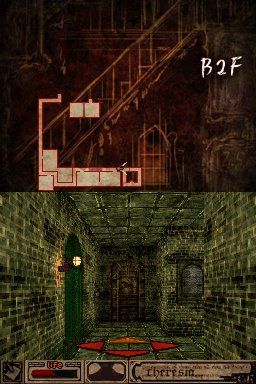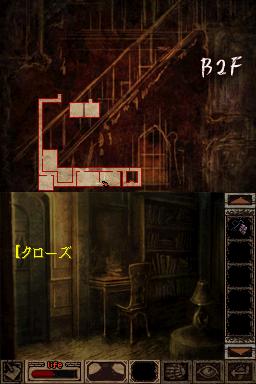GamesRadar+ Verdict
Pros
- +
Finally solving some annoying puzzle
- +
Competently gloomy inner-monologue
- +
Putting DS down
- +
staring at clouds
Cons
- -
Ponderously walking repetitive halls
- -
Moving a chair and being stabbed
- -
Wanting to die
Why you can trust GamesRadar+
At this time of year, little can be more entertaining than horror games. It’s fun to be scared, whether the fright is coming from the simple “1, 2, 3…Boo!” approach or a deeper, more atmospheric method. Whilescary gamesmay not always put you in a great state of mind, only Theresia: Dear Emile, a poor excuse for a first-person-adventure-horror game, can fill players with such melancholy and hopelessness.

The game starts with the old chestnut of an amnesiac leading lady lost in a strange place she doesn’t recognize. Her surroundings are dingy, copper colored with old blood, and the stink of death hangs in the air. Behind each door of this hellhole is some disquieting scene. But the setting has no immediate danger to it; it’s just a foul place you want to leave, not explore. No one else is in this maze of horrors she must escape, though she does find all these papers addressed to Emile giving her clues to her situation.
It all plays in the way of adventure games of old: trying to find the one tiny important spot on a single static screen using the confused reasoning of a mad man. Why put out a fire by finding and placing a hose on a faucet when there are pots and pans around perfectly capable of carrying water? That’s just one example of the illogical way to solve several of the games puzzles. And in case you get bored of that, there is abundant backtracking. Yay.
But the main problem with searching for items is that the whole hideous place is covered in little traps to make you to distrust any choice or experimentation. Want to check a table for clues? Uh oh, a needle just stabbed you. Feel like checking the next one? There are ways around the traps for the cautious, but these little ambushes slow everything down and annoy instead of creating the sense of dread or fear as they were probably intended.

Aside from sharp, hidden things, Theresia has no enemies; it’s more like your surroundings are the enemy. But your “enemy” doesn’t look very good; when searching for clues you’re stuck with a grainy picture, meanwhile you walk from room to room in the simplest of 3D hallways. Plus the game’s repetitive and shallow soundtrack only makes it worse.
Theresia’s malaise really sets in when it comes to storytelling. Exploring the hallways, going from room to room looking for clues and keys -it’s all told via first person narration. Not a bad idea, but the view from inside her head is worse than repugnant sights outside. When hurt, she explains thoroughly just how sickening the pain is and how horrible the blood looks. Plus you don’t see what she looks like, so you can only imagine a scared girl in constant pain and confusion. Not our favorite past time.

Horror, like any genre, is full of possibilities; it can just as likely succeed as fail. But the atmosphere of Theresia, as well as its convoluted story, just doesn't scare us, but insteadmakes us want to stop playing, or failing that, kill ourselves. We suppose it successfully creates a truly anxiety-riddled world, but few players will want to spend any real amount of time in it, unless they have a few Xanax handy.
Nov 12, 2008
More info
| Genre | Adventure |
| Description | A horror game that makes you feel far more sad than scared, Theresia is hardly worth playing through. |
| Platform | "DS" |
| US censor rating | "Mature" |
| UK censor rating | "Rating Pending" |
| Alternative names | "Theresia: Dear Emile" |
| Release date | 1 January 1970 (US), 1 January 1970 (UK) |
Henry Gilbert is a former GamesRadar+ Editor, having spent seven years at the site helping to navigate our readers through the PS3 and Xbox 360 generation. Henry is now following another passion of his besides video games, working as the producer and podcast cohost of the popular Talking Simpsons and What a Cartoon podcasts.

Peach Momoko dresses up Phoenix, Black Cat, Wolverine, Venom, and many more in new kimono variant covers

It's not even out yet, but the gloriously old-school JRPG Clair Obscur: Expedition 33 is getting a live-action movie thanks to its "compelling narrative and complex characters"

Devil May Cry anime adaptation might have the best opening sequence in Netflix history
